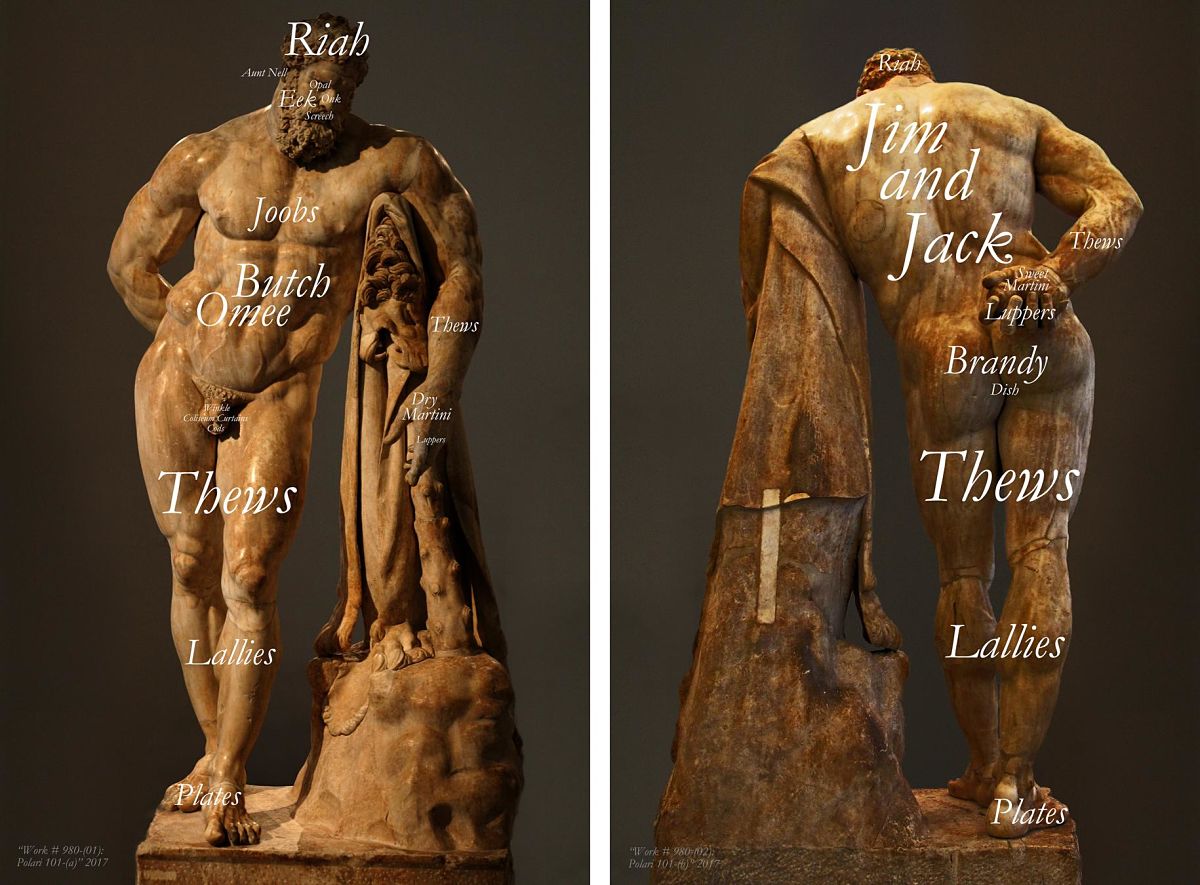Recognized by the United Nations as a language threatened with extinction, Polari was a secret form of communication created in the 1930s by a certain class of gay men in Lon-don at a time when concentration camps were being set up elsewhere. Quentin Crisp was perhaps the most famous speaker of this amalgam of lingua franca, Italian, Romany, rhym-ing slang, and back-slang, and it allowed initiates the protection to speak freely in an envi-ronment fraught with danger. And like Art-speak, Polari was both a weapon and a shield. At its height in 1950s and 1960s, Polari was a shield because it protected the speaker from real danger by being unintelligible (in the similar way that art-speak is about saving-face by talking bullshit to cover-up a lack of ideas); and it’s a weapon in its very audacity and ag-gression. To quote Paul Butler, author of Polari: The Lost Language of Gay Men, this argot al-lowed “people of a shared identity to recognize and communicate with each other [and] created both an identity and the alternative society that housed them; but by the 1970s it had come be viewed as trivializing. However, in the 1990s there was a revival of interest in Polari. It still served to create an alternative view of reality, but it is an alternative view of historical reality – history from the point of view of gay men.” At present, there is an inter-national effort the assemble (and expand) a complete lexicon of Polari, and given there are storm clouds on the horizon, there is something subversive and potentially revolutionary in the act of possessing a secret form of communication. Its knowledge becomes a form of power – the power to speak (and plot) openly in the face of shifting political winds . . . If our collective gay history has taught us anything, it is that our present state of grace can, and probably will at some point, abruptly come to an end. It is a work that is both funny and frightening; both sexy and serene; and one that wallows in both its superficiality and deeply subversive intellectualism that at the same time pays tribute to those forbears with nerves of steel so tough that their confrontational stance demanded a grudging respect. In “Work # 980: Polari 101 (a & b)” the Polari-speak words for various body parts are splayed across the Farnese Hercules – art history’s all-time he-man. The provocation is identical to the strategy employed for L.H.O.O.Q. (colloquially “she’s so horny”) – neutralizing our admiration for the Mona Lisa’s aura of greatness by directing our attention toward her base, corporeal desire. As employed here, the aura surrounding the statue is stripped away, reducing him to nothing more than the object of our lustful glances . . .
Bruce Eves
*Exhibition information: Bruce Eves, Polari is on display at Robert Kananaj Gallery,172 St Helens Avenue, Toronto. Gallery hours: Tue – Sat, 11 – 6 p.m.

